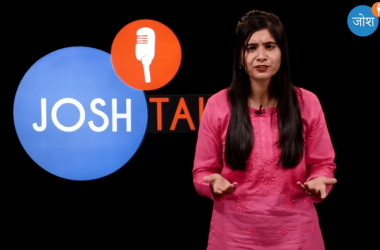Gold jewelry is not only a valuable possession and investment, but it’s also a clever technique to borrow money. Read on to learn how to get a quick loan with your gold jewelry.
Financial difficulties are one such uncertainty that nearly no one can avoid. One of the most acceptable methods to deal with such financially challenging situations is to take out a loan. While gold has long been a popular investment option in India, taking a loan against it adds to its appeal. At the same time, many other sorts of loans are accessible today; a Gold Loan is one of the greatest ways to satisfy your financial needs in a pinch.
But, what exactly is a gold loan, and how does it work? We answer it here!
ADVERTISEMENT
What is a Gold Loan, exactly?
As the name suggests, it allows you to borrow money by surrendering your gold jewelry. In other words, you’ll store your gold ornaments with the lender and use them to secure a loan. You can pay back the loan sum and get your gold back from the lender if you repay it within the agreed-upon time frame.
You are not, however, permitted to borrow the total value of the gold you promise. Lenders often only lend a predetermined proportion of the value of the pledged gold. An instant loan against gold, on the other hand, makes a lot of sense if you’re in a financial bind or want to take advantage of an investment opportunity.

Why is gold load obtained faster than other loans?
People take out a gold loan to get rapid cash for personal, commercial, or other non-speculative purposes. It is one of the most convenient and quick ways to meet financial obligations. Compared to different sorts of loans, this is the most successful method and is used regularly.
ADVERTISEMENT
Compared to the steps followed during processing other sorts of loans, obtaining a gold loan is a comparatively simple process.
Step 1: To apply for a gold loan, bring your gold jewelry to a jewelry store or a bank.
Step 2: Bring some essential evidence documents with you, such as an original gold purchase bill and proof of identity. The loan provider will perform a separate check for gold jewelry presented before confirming any of these papers.
ADVERTISEMENT
Step 3: The loan provider will conduct a gold valuation to determine the purity of the metal. It is usually done with a high-tech machine that determines the exact purity of gold jewelry.
The authority will examine the gold’s authenticity, weight, and purity.
Step 4: The loan will be approved based on the gold valuation, ranging from 70% to 80% of the actual gold value. In addition, they will deduct standard processing fees, which vary by loan issuer.
Step 5: Obtaining a loan against gold typically takes less time. The customer must sign the loan agreement after deciding on the gold value and quantity.
You will not be given cash if the loan amount exceeds a specified limit, such as 20,000. There is no requirement for a guarantor or a solid credit history for the borrower.
Banks or NBFCs?
For gold loans, borrowers should choose between banks and non-bank financial companies (NBFCs).
Some NBFCs specialize in gold loans among organized participants. In comparison to banks, such lenders are more liberal in valuing your gold and offer more flexible repayment choices. Assume that a bank or an NBFC lends you 75% of the gold’s worth as a loan. However, if an NBFC values gold higher, it will provide a more significant loan amount. While NBFCs may provide a larger loan, banks offer lower interest rates on gold loans.
NBFCs that specialize in gold loans also offer a variety of repayment choices. A borrower might choose bullet payment instead of the average equivalent monthly installment (EMI). In this case, the lender will deduct the exciting part of the loan amount in advance.
The borrower might also pay interest as an EMI during the loan term and principal at the end. This is a typical occurrence at banks. Prepayment is usually not an option with gold loans. A few banks can charge up to 1% of the outstanding loan. Lenders can also charge valuation fees in addition to processing fees.
Amounts of gold loans that are available at both the minimum and maximum levels
“How many loans can I get on a gold loan” is a question that is frequently asked. A person can borrow against a gold item depending on the lender. ICICI Bank, for example, offers gold loans ranging from 10,000 to 1 crore rupees. Gold loans between Rs 20,000 and Rs 20 lakh are available from the State Bank of India (SBI). On the other hand, Muthoot Finance provides gold loans with no maximum restriction, starting at Rs 1,500.
The length of the gold loan varies depending on the lender. HDFC Bank, for example, provides gold loans with terms ranging from three to 24 months. An SBI gold loan can be repaid over 36 months. Muthoot Finance provides a variety of gold lending options.
Interest Rates for Gold Loans
Firstly, secured loans are often less expensive than unsecured loans. The interest rate on a Gold Loan might range from 10% to 16 percent, depending on the institution you choose. Typically, these loans are available for 6 to 12 months. If you repay the loan in full on time, your gold jewelry will be returned to you in the same condition as when you first deposited them.
The interest rates for gold loans obtained by pledging gold are lower than those on other loans, ranging from 7.35 percent to 29 percent per annum. In India, banks and other financial institutions offer gold loans ranging from Rs.1500 to Rs.1.5 crore.
Benefits of Gold Loan
No Credit History: You don’t have to worry about your credit score with gold loans because banks don’t look at your credit history. Before getting a gold loan, you usually don’t have to disclose any current debts or debt obligations.
Low-Interest Rates: In general, gold loans have a lower interest rate than personal loans, implying that the cost of a gold loan is lower than that of other loan kinds. Furthermore, you will be obliged to repay the loan with less money from your pocket.
Processing Time: Among all lending choices, gold loans have one of the fastest disbursement times. They’re generally disbursed within a few hours of the loan application being submitted. The appraisal method focuses primarily on the collateral quality, with little or no consideration given to the borrower’s credit history.
Processing Fee: Personal loans typically have processing fees of up to 3% of the loan amount. Processing fees for gold loans usually range from 1% to 2% of the loan amount, with some lenders imposing a flat cost starting at Rs 10. As a result, while calculating the actual cost of obtaining a loan, loan applicants must account for processing fees.
In Summary
A gold loan is a sure-fire way to borrow cash in a pinch. Gold is generally the most underutilized asset in India, sitting in lockers for a year or less. It can be used to provide working capital to your bank account. How? A ‘gold loan’ is the solution. It’s a great way to get cash from your assets. A gold loan also offers the lowest gold loan interest rates and no or minor prepayment penalties.
A gold loan can help you get over a short-term cash flow difficulty, but keep the loan term short and seek organized payers, as the Reserve Bank of India regulates them.
References
Procommun Suggestions
procommun.com








